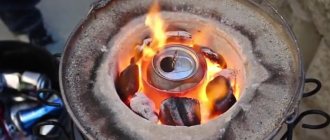What is needed to make silicone
The following materials are required:
- liquid glass;
- medical ethyl alcohol;
- container;
- dye/gouache;
- sand;
- mold;
- potato starch.
Before you start making a rubber-like material, you need to ensure a safe environment . The work must be carried out with rubber gloves, because this material itself is very toxic.
It is also necessary to choose the right place to carry out the work. The room should be well ventilated . The ideal conditions for creating silicone products are outdoors. But if this is not possible, then you can do the work on the balcony.
It is also worth knowing the peculiarity of the material - rapid hardening . Therefore, it is recommended to produce molding material in small quantities or to carry out all actions quickly.
Other materials can be used to make silicone:
- silicone sealant - 30 g;
- liquid glycerin - 3 drops;
- paint, preferably acrylic - 1 drop;
- a plastic cup;
- straw, pipette or spoon;
- white spirit - 150 g.
Place sealant in a plastic cup. Add glycerin and paint to it. To do this, it is convenient to use a pipette or straw. Add white spirit. Now you need to mix the mixture thoroughly so that the mass is homogeneous. Silicone is ready! It will remain in a liquid state for about 4–5 hours, and then the pouring silicone will harden, and then it will be difficult to melt it.
Sealant molds
Silicone products are not difficult to make, the main thing is to follow the instructions on how to make molds correctly.
For work you will need the following materials:
- A sheet of A4 paper;
- Glycerol;
- Cling film;
- Scissors;
- Solvent;
- Item for imprint;
- Dishes for the mixture;
- Silicone sealant.
Operating procedure:
- On paper you need to trace the outline of the object on which the mold will be made.
- Then cling film is applied to the image.
- Place 100 ml of silicone sealant in a glass container and add 10 drops of glycerin.
- The components need to be mixed, and then pour 3 ml of white spirit into the bottom.
- Using a wooden or metal stick, mix the mixture well until you get a homogeneous mass.
- The object from which the mold is made must be lubricated with oil.
- This is necessary so that you can later separate it from the product.
- The resulting mixture must be poured out and wait for the material to dry.
- Drying time varies from 2 to 4 days, it depends on the silicone itself.
When the product is ready, you can separate the item with a needle if it is small in size.
The appearance of the form is corrected with scissors, as there is always excess material left.
In the photo of beautiful molds that you made yourself, you can see that they are original and remarkable in appearance.
How to make silicone at home
First of all, to make the material, you need to mix ethyl alcohol with liquid glass in equal proportions. This can be done in any plastic container. During mixing, you need to add dye to the mass according to your own preferences.
Both a wooden stick and a regular spoon are suitable for kneading. After kneading, you will get a mass reminiscent of casting, plasticine or rubber. It can be used in several ways in the future. For example, knead with your hands. You can also put the mixture into a regular cooking bag, a gun for construction silicone or a syringe with the necessary attachments and squeeze out the amount that is needed. You can use regular cookie cutters or take some. Or another option is to cast the required shape.
Important! Repeating the shape of an object will only be possible if you apply silicone mass to the outside of the object. To put it another way, apply the mass not into the mold, but from the outside.
Another important point : before applying the rubber mass, the surface should be lubricated with vegetable oil or soapy water.
Generate additional income for yourself - top services and exchanges for earning money.
LiveInternetLiveInternet
Quote from message klassika
Read in full In your quotation book or community!
Making flowers and fruits from silicone
Master class taught by Elena Samsonova
I offer you a master class on making beads from acetic construction silicone (acid silicone sealant). When purchasing sealants, keep in mind that in addition to silicone sealants, they also sell others (urethane, acrylic, etc.), the properties of which are not discussed in this article. So, if you bought transparent silicone sealant at a hardware or hardware store (you can also buy white and also tint it, or blue, red or black, to which you don’t have to add dye), opened it and smelled vinegar - you bought exactly the one which we will talk about below.
Acetic silicone sealants are considered purified and therefore are used in areas with increased sanitary requirements. They are used to seal seams in ovens, refrigerators and other places that come into contact with food. These sealants are environmentally friendly and safe for human health, you can work with them without special protective equipment, not forgetting only about good ventilation, since caustic acetic acid in high concentrations can irritate sensitive skin and mucous membranes. The only safer products than vinegar sealants are specially formulated sealants for aquariums. Aquarium silicone is absolutely harmless to living organisms. But it does not become this way immediately, but 7-14 days after application, i.e., when the vulcanization reaction is completely completed. So it’s worth looking for sealant not only in hardware and construction stores, but also going to a pet store. Avoid using silicone with antifungal components - it is intended only for sealing joints in toilets and bathrooms; contact of such silicone with food should absolutely not be allowed.
After hardening, silicone retains rubber-like elasticity and plasticity. Therefore, you should not paint and/or varnish silicone products - it will peel off anyway. If desired, paint (food coloring is best) or ink can be mixed with the silicone that has not yet hardened immediately after opening the container, and work with the already colored one. When adding a dye, keep in mind that it can change the properties of the silicone and slow down or speed up the hardening process. Add paint literally drop by drop - for 50-80 ml of silicone, about half a teaspoon of dye is more than enough, or better yet, even less. Water-based paints speed up the vulcanization process of silicone - if you tint silicone with such paints, after 5-10 minutes it will be almost impossible to squeeze it out. Hardened silicone has increased moisture resistance, can withstand both low and high temperatures (from −50C to +200C), and is insoluble in most acids and alkalis.
To make silicone beads you will need:
1. Silicone (50-80 ml for one “sitting”), transparent, white or any other color you need.
2. Dye (ink from ballpoint or gel pens, non-water-based paints, food coloring, etc.), if you decide to tint the silicone.
3. Toothpicks, wooden skewers or sticks.
4. Gloves (not latex). You can do without gloves - just try not to get dirty and dry your hands often.
5. Toilet paper or napkins (lots of them).
6. Small plastic bags, or a syringe, or disposable plastic cooking bags.
7. Scissors.
8. Disposable syringe. The ideal option is culinary attachments of the smallest sizes, with a simple round hole (No. 2, No. 3), a hole for leaves (No. 65s, No. 65) if desired, and a third one for petals (No. 101, No. 102). But you can do without attachments: you just need to make a small slit in the bag and squeeze through it, or use disposable syringes or homemade attachments made of plastic or pen caps. If you get a whole set of such attachments, then you can do anything with silicone.
9. Wax paper, newspaper or cellophane to protect the work surface.
Silicone “production” is quite easily soiled - stock up on napkins and wipe your hands and everything else on them more often. Before washing with soap and water, both hands and tools must be thoroughly dried, getting rid of all silicone if possible (remember: silicone hardens precisely from moisture).
After hardening, silicone easily comes off plastic and polyethylene. But metal and glass can be a little tricky to clean. If you don’t mind, stock up on a special solvent for your sealant, then cleaning the tools will be very easy. They say that white spirit also helps a lot, but I usually just need paper napkins.
So, you squeezed transparent or white silicone out of a tube into a palette (glass ashtray, disposable cup, etc.), mixed it with a wooden (ice cream) or plastic (lollipop) stick with a drop of paint or ink.
Then we place the colored paste in a syringe, in a prepared bag with a nozzle, a bag for silicone, or simply in a bag with a small hole cut in the corner - the size and shape of the squeezed out silicone drops will depend on the size and shape of the hole. The photo shows the bag I use. Since it is not cone-shaped (you can use a disposable culinary bag - then everything is very simple), I had to wrap the junction with the nozzle with electrical tape so that the silicone did not flow over the edges, but went straight into the nozzle. If you use a syringe or a cooking bag, this problem will not arise. And this is not a problem at all if there is electrical tape or adhesive tape in the house.
We put a bead (glass, wood or plastic) on a toothpick and begin to carefully squeeze the silicone from the bag onto it. Base beads for working with siliconeThe shape of the base bead will also depend on the shape of the silicone bead. You can use round, oval, cone-shaped, elongated and any other beads to achieve the desired result.
It is better to squeeze roses and Christmas trees onto cone-shaped or elongated beads.
Raspberries and blackberries work well on round, oval and cone-shaped ones. Corn is best done on a long stem. Pineapple - on the oval. Any other images and flowers may require a base of any shape - the limits are limited only by your imagination. Interesting effects can be achieved with undyed transparent silicone by applying it to multi-colored beads or beads with glitter.
Keep in mind that the working time of silicone is about 30 minutes. It depends on the temperature and humidity, as well as on the dye used. In humid and warm air, silicone can harden as early as 5 minutes. It’s very good if you can choose a dye that allows you to work with silicone for a longer time.
For example, having realized that one dye (water-based) made my silicone harden literally after the third bead, I began to add another type of ink (alcohol-based) to it, which prevents the silicone from hardening so quickly. The result is a mixture that I can easily work with for 30-40 minutes and manage to make about 10 beads during this time. Experiment! And find the best color and time option.
Keep in mind that too much paint can negatively affect the silicone's formula and prevent it from curing at all. Normally, silicone hardens within 24 hours so that it can be touched without disturbing the shape of the bead. If on the third day your beads remain too soft and sticky, it means that the dye was chosen poorly - try another one.
The process of making blackberry beads from silicone.
To squeeze out round beads, squeeze the silicone through the round hole, holding the tip at a 45-degree angle to the surface of the base bead. Squeeze a little silicone onto the bead so that a droplet falls with its flat cut onto the surface of the bead in the right place (start dripping from the top hole). Continue applying even pressure on the syringe or bag until a round droplet of the desired size is formed. Then stop pressing and sharply move the tip down, smearing the remaining silicone on the base bead (as if wiping it on the bead). Repeat this movement until the desired effect is achieved. For raspberries and blackberries, you will need to cover the entire bead with droplets, placing them in a circle, close to each other in a checkerboard pattern.
Needles are also made using a round or slightly oval hole. Silicone beads with needles Point the tip at the base at a right angle. Squeeze out the required amount of paste, stop squeezing and lift the tip sharply upward at the same right angle - the silicone will come off the tip, leaving a mark in the form of a needle tail. Place the next drop close to the previous one. Fill the entire surface of the bead.
It is convenient to adjust the length and direction of the “spines” and clean up various irregularities with the tip of a toothpick.
It is best to squeeze roses out of a flat or slightly curved narrow hole. The process of making rose beads from silicone If there is no special nozzle (No. 101 or No. 102), try making one from a pen cap, for example, or molding it from plastic, making the desired slot with a blade or a sharp thin knife. For the base, fashion it out of plastic or choose a cone-shaped bead. Squeeze the petals one at a time in a circle, starting from the top. Direct the tip at an angle to the bead (slightly away from it), gradually increasing the angle of inclination.
At the same time as squeezing out the paste, turn the bead on the toothpick so that the petals lie in a spiral.
You can come up with any other flowers yourself - dandelions, chrysanthemums, various buds. You just need to change the shape of the nozzle, as well as the angle, direction and intensity of squeezing out the silicone. It is convenient to correct and clean up irregularities with the tip of a toothpick.
It is convenient to attach leaves to flowers and berries after the beads have completely hardened. Adding leaves to silicone beads Then you can remove the finished berry from the toothpick (if it is a little stuck, you can trim the silicone with nail scissors or half a razor blade), turn it upside down on the side where the sepal should begin and calmly squeeze out the leaves, masking the remaining irregularities with them if necessary.
In the absence of a special culinary attachment (No. 65 or No. 65s), the leaves are made with the same round or oval hole as the needles. You just need to guide your hand when tearing it off at the angle required by the leaves, not necessarily 90 degrees. If you have a nozzle, practice squeezing leaves of the desired size and shape with it. The different force and duration of pressure on the syringe or bag will determine the shape of the leaf (its width, length, location).
The surface of silicone products is rubbery to the touch, and various fibers and threads, especially woolen hairs, easily stick to it. Therefore, I would not recommend using silicone for jewelry, especially winter jewelry. A bracelet, earrings, beads will collect all the fibers from your favorite sweater, scarf, or blouse. In summer, wearing such products will be less problematic. Miniature silicone beads in the shape of flowers and berries (by the way, who else has ideas of what can be squeezed out? Hedgehogs, frogs, spider bugs? They can serve as excellent accessories for your dolls, decorative elements, decoration of jars for dried fruits, saucers for jam ( see above - acetic silicone is absolutely harmless a week after application). Such beads are not afraid of either cold or heat, they are not afraid of alcohol, soap and other cleaners. They can be washed, frozen and put in the oven.
Silicone can withstand heating up to 200C if no paint is added. Please note that if a dye has been added, the heat-resistant properties of the silicone may change. Red sealant, industrially manufactured specifically for high temperatures, can withstand temperatures up to 400C. But if, for example, you mix acrylic paints into transparent silicone, then in the oven already at 100 degrees anything can happen to the silicone due to an increase in the percentage of water and acrylic in it, so it’s probably better not to experiment with the oven.
Silicone beads can be stretched in any direction - they are elastic. They can be dropped (if the glass bead inside does not break, the silicone will have no harm). But they are very easy to cut and pierce with sharp objects. Mentioned above is the common use of silicone glue to add volume to decoupage elements. So you can safely include silicone beads in projects using the decoupage technique or, for example, glass painting (considering only that the silicone itself should not be coated with varnish and paint - it will crack).
Have you already realized what limitless spaces for imagination this material opens up? So go and create!
source - https://md-zadina.ru/
How to make a silicone mold
To do this you will need a special material - compound , which consists of:
- catalyst (hardening agent)
- silicone pastes.
Thanks to these components, any shape can be cast. True, this is not exactly injection-molded silicone (it is more reminiscent of rubber in its properties), nevertheless.
To make an analogue in the form of a silicone mold, you need to do a number of steps:
- Take the container. It must be intact, without cracks.
- Place in the container the object made of plastic or plaster from which the mold will be made.
- Take sand or dry mixture and fill the container with it. This way it will be clear how much silicone is needed for pouring.
- Treat the item with sunflower oil or soapy water.
- Pour in the silicone mixture.
- Close the container tightly.
- Wait 15 minutes.
- Disassemble the container. The silicone should not stick to your fingers at this stage.
- Cut lengthwise using a regular stationery knife.
The required silicone mold is ready!
Materials for casting molds
Silicone mold
Do-it-yourself garden figurines can be made at home. Using templates, garden figures are made from concrete or plaster in the form of vases, flowerpots, houses, flowers, mushrooms, gnomes, a castle, busts, decorative bricks, and modeling elements. Forms are made from the following materials:
- Silicone . Has a liquid consistency. Forms made from it are durable, flexible, and easy to work with.
- Gypsum . It is mixed with gypsum powder before pouring the cast. It is better to use special modeling plaster, but even finishing putty or alabaster will do. You need to be careful with gypsum blanks, they are fragile.
- Polyurethane . The material allows you to obtain small elements of figures. The only drawback is that before pouring, the walls of the impression must be lubricated with wax or any greasy cream.
Do-it-yourself sealant for outdoor work
As a rule, this is a putty that firmly fixes the glass in the frame. It is prepared using the methods described below.
Linseed oil and construction chalk
In addition to fixing glass, this mixture can even partially restore wooden structures, seal large cracks and small corner chips. To prepare, you will need linseed oil (ordinary one used in the kitchen will do) and chalk.
Cooking sequence:
- First, grind the chalk. The most convenient way is to wrap a piece of chalk in a thick material and tap it with a heavy, hard object.
- The resulting chalk flour is mixed with linseed oil in a ratio of 4 to 1 (4 parts dry powder and 1 part liquid).
- The result should be a mixture similar in consistency to dough. Check readiness by rolling the putty into a small ball - if it blurs, add more chalk powder.
- The mastic will have a yellowish tint, which is good for varnished wood. If desired, you can change the color by adding dye.
How to prepare blanks
Next, we’ll look at what preparatory work is needed to create a silicone mold yourself.
To create a form, you first need to prepare the container you need for later work. Because it will make the process of removing parts simpler and more convenient.
The container must be completely sealed, since the substance may leak out of it through cracks.
Before placing the substance in a container, it is coated with a solution. If a matrix is needed for vertical disassembly, it is secured to the bottom using plasticine. Afterwards the substance is poured.
It is important to pour the material slowly until the mold is completely filled. Then close the container tightly and wait 15 minutes.
Afterwards, the form is disassembled, and the substance should no longer stick to your hands. Thus, we are preparing to create a silicone mold.
Casting the mold
By mixing these components in the correct ratio, you get an interesting composition that will allow you to distinguish any forms. The catalyst will prevent the mixture from hardening too quickly.
The process of copying the required shape onto silicone is also carried out in several stages:
- Take a container that does not have small holes or crevices.
- Place a model of a mold made of plaster or plastic in a container.
- Fill the box with the attached model with sand to calculate how many milliliters of silicone are needed.
- Treat the model with a soap-based solution or oil, only then pour in the silicone mixture.
- Prepare a sealed lid for the box in advance.
- Wait about 15 minutes.
- Disassemble the container and check that the material stops sticking to your hands.
Casting
Now, thanks to the presence of a silicone mold, you can repeat the model as much as you like.











